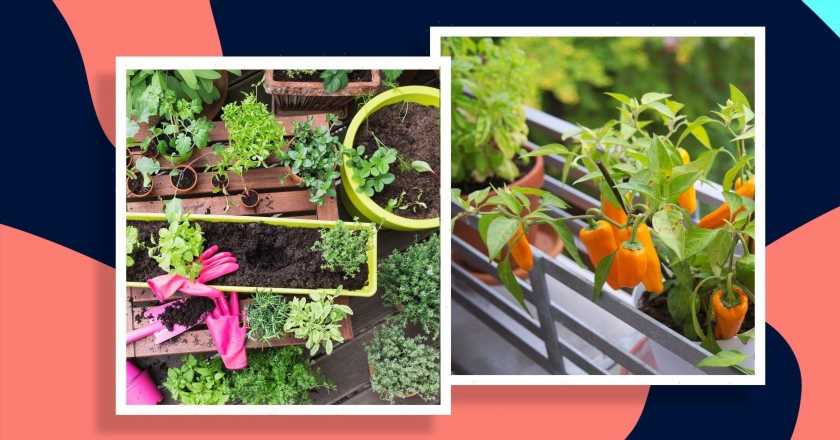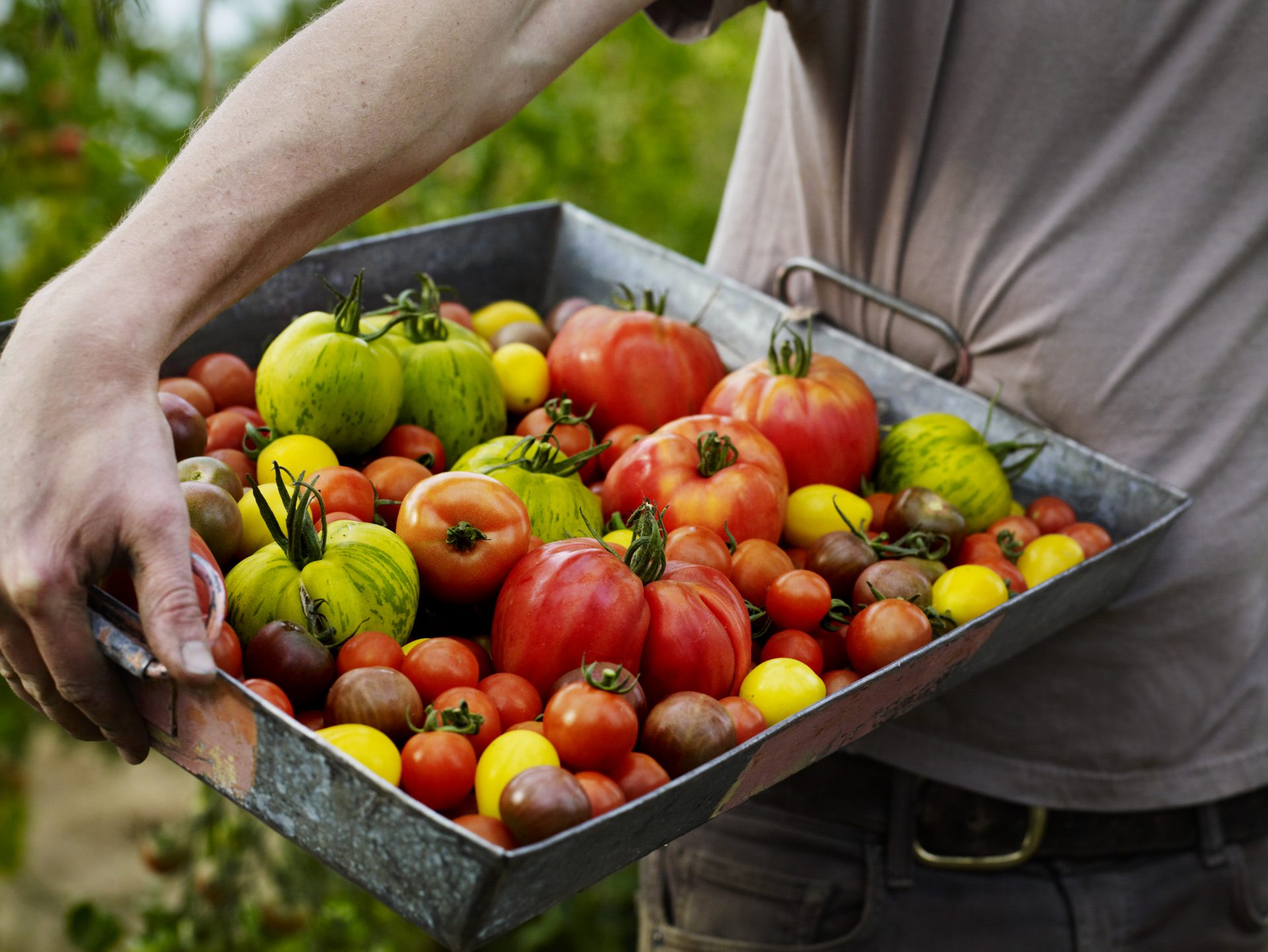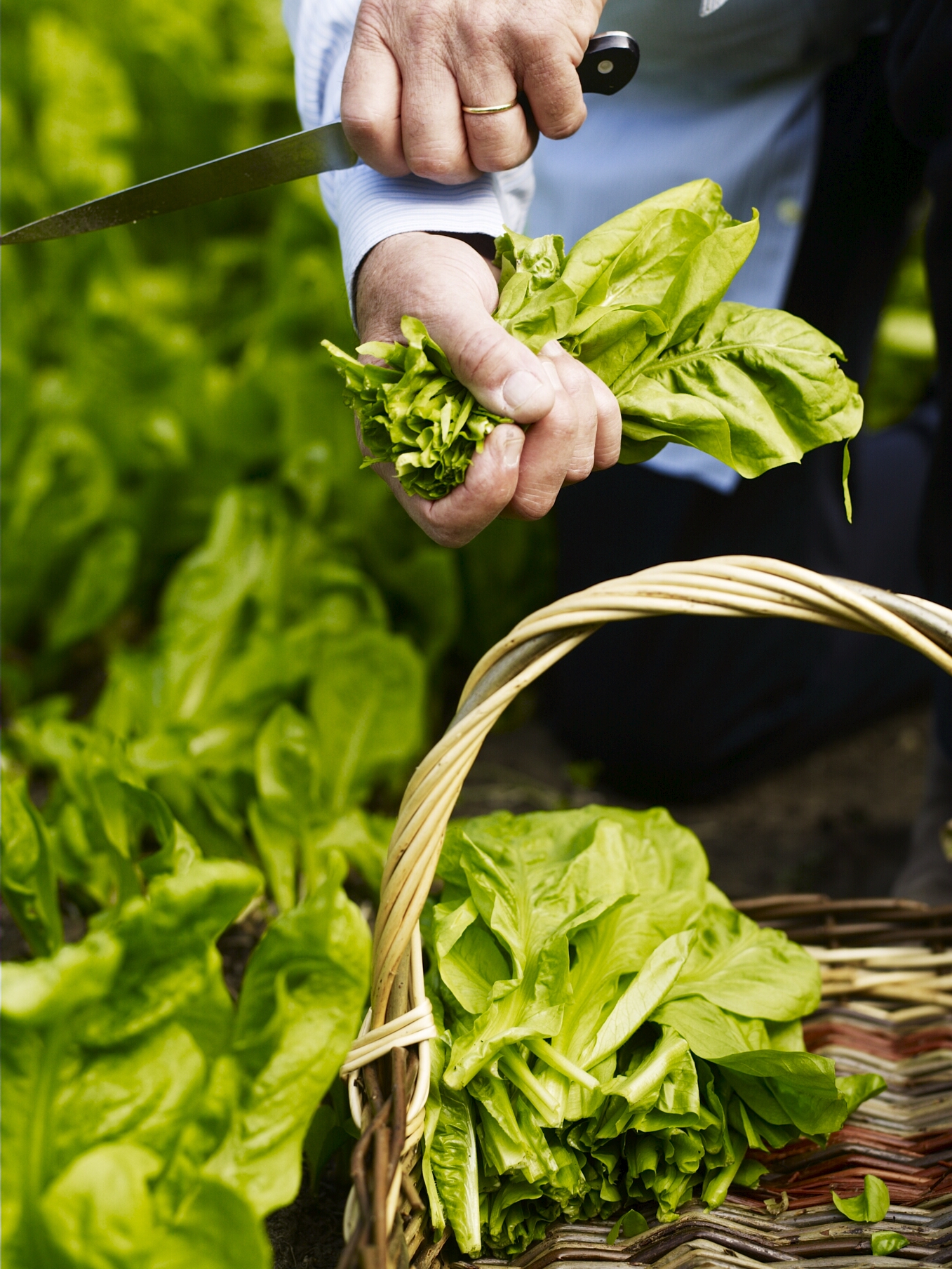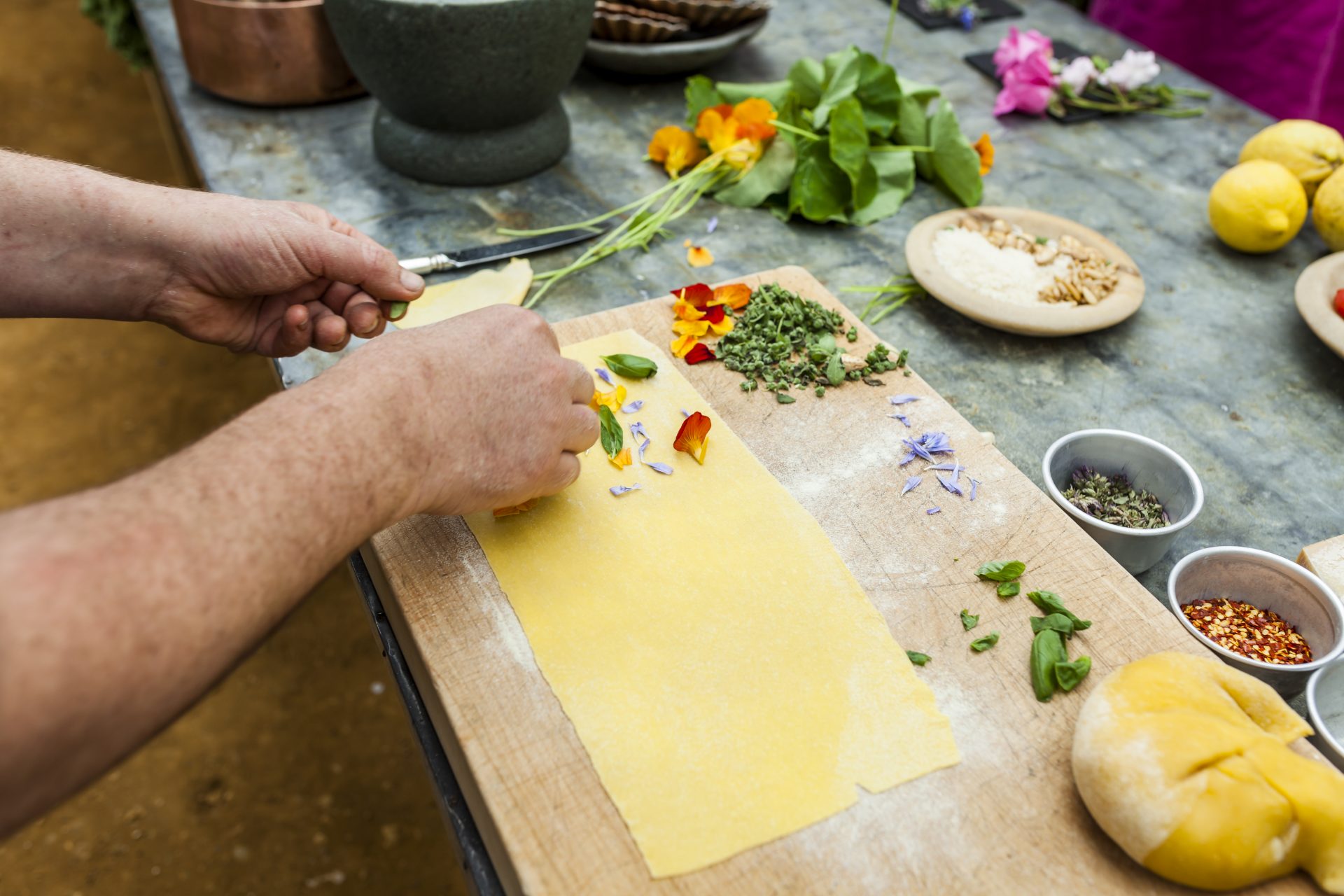The number of people growing their own vegetables for the first time has skyrocketed. If you want to get in on the act, but don’t have any outdoor space, read this guide from the head of horticulture at Petersham Nurseries, on how to grow your own food whether you have a garden or not.
Welcome to The Curiosity Academy, Stylist’s new learning hub where you can access workshops, how-to guides, new research and learn the most up-to-date skills from the UK’s most in-the-know people.
If we didn’t love nature before, a year and a half spent in various states of lockdown has definitely shown us how essential it is for our wellbeing. Many people have taken their passion for green stuff even further and are starting to get hands-on in their gardens.
Gardening is being taken up by a whole new generation. A survey from LV General Insurance last year found millennials spent nearly twice as much money on their gardens in lockdown, compared to the rest of the population. While national groups like the Royal Horticultural Society and National Vegetable Society have reported a huge surge in young people growing their own vegetables for the first time.
Having your own private garden to dig in is a luxury for many people, but it doesn’t have to stop you from growing your own food.
You may also like
How to ferment vegetables at home: a beginner’s guide
“As long as you follow a few simple rules you can grow your own food almost anywhere,” says Amanda Brame, the head of horticulture at Petersham Nurseries, whose love of gardening flourished from watching her grandparents tending to their plants and homegrown vegetables.
“More and more people have embraced gardening over lockdown, but unfortunately it’s not something we learn about at school,” says Amanda. “No one should be daunted by it. You learn little tips from making mistakes, but providing you’ve got enough light, enough water and you keep your plants happy – you can’t go wrong.”
If you want to start growing food at home but don’t have any outdoor space, here’s Amanda’s advice on where to get started. From what types of food to plant, when to plant it and what equipment you’ll need, this is your ultimate guide to growing your own.
Vegetables you can easily grow at home and when to plant them
Amanda recommends starting to grow food at home with these vegetables: “These are good essential vegetables that will provide you with a lot of meals.”
- Beetroot
- Mixed leaves
- Spring onions
- Radishes
- Chicory
- Courgettes
- Tomatoes
When to plant them
If you work with the seasons and do a bit of forward planning, you can grow and pick food for your dinner table all year round.
Amanda recommends sowing seeds for winter vegetables like leeks, carrots and kale in the summer. This will give you a harvest by November. “Winter vegetables are less likely to thrive in containers,” says Amanda. “They’re better in a little patch of ground if you have it.”
Summer vegetables are more easily grown in containers and can give you healthy crops for most of the year.
“Things like salad leaves, radish and spring onions can be sown every few weeks, so you’ve constantly got a supply,” says Amanda. “If you want to extend your production, sow them in them indoors in March. Keep them indoors until they’re a little bit larger, then pop them outside in April. You can pick those until May, by which time your next batch will be not long behind.”
June is a good time to start sowing more seeds. These plants should continue flowering from the end of August through into September.
“Summer veg will generally start finishing up around the middle of October,” says Amanda. “The last time to sow this summer veg is early September. They will grow into small plants by mid-October and then quite happily sit outside throughout the winter. By March, you’ll be able to pick them.”
What you’ll need to grow food at home
Organic compost
“Good quality organic compost is a real must,” says Amanda. “It will retain water and make sure the soil is healthy and not dried out.”
Seed trays
Seed trays are essential for growing vegetables. Plant your seeds in the trays and once they begin to outgrow them, move them into a bigger container.
“It’s a shame, but plastic seed trays are definitely the best thing – a piece of plastic guttering works really well. If you do want to go the sustainable way, you can use biodegradable coir pots,” says Amanda.
Watering can
It’s best to use a watering can with fine holes to prevent over-watering.
Containers
If you don’t have a garden and you’re growing vegetables on a balcony or terrace, the type of container you use is important. For most vegetables, Amanda advises using a container that’s at least 40cm deep: “This will retain enough soil and moisture for the plant to be happy.”
If you want to grow vegetables with a long root, like carrots, parsnips or French beans, it’s best to go for a container that’s even deeper – around 60cm deep. “You can’t expect a poor bean plant to produce lots of beans unless it’s got lots of space to grow long, rich roots,” says Amanda.
Other smaller vegetables like radish, spring onions and spring greens may only need a 30cm deep container.
If you use a metal container, Amanda recommends putting a few layers of newspaper or thin cardboard around the edge: “They get quite hot and can start heating up the roots. A little bit of cardboard is a simple trick to help cool it down.”
Crocks
Putting a few crocks – shards of crockery – at the bottom of your container will mean the soil doesn’t fill the drainage hole at the bottom of the pot and help keep the soil full of moisture.
Fertiliser
It’s a good idea to feed plants with fertiliser, especially if you’re using containers as the plants won’t be able to find the minerals they usually get from soil. “A weekly feed with a soluble seaweed fertiliser is recommended,” says Amanda. “It covers everything for both flower and leaf production.”
You can buy seaweed fertiliser from most gardening shops, including Homebase and B&Q. Amanda recommends Shropshire seaweed: “We use it at Petersham Nurseries on all our things and it’s brilliant.”
Top dress
Once you’ve planted your vegetables, top dress your container with 3cm of sharp grit or pebbles. “This is a really good way to help retain moisture and stop the sun baking the soil,” says Amanda.
How to start growing food at home
Sowing your seeds
Sow your seeds into loose soil. “I suggest digging over the soil first to the depth of a spade or trowel,” says Amanda. “Then spread over some organic compost and tamp it down to take out the air pockets in the soil.”
Then use a stick to draw a line across your prepared soil and sprinkle the seeds across it. “Sprinkle the seeds in very lightly,” says Amanda. “Then just cover them with a bit of soil from the sides.”
“It’s important to sow your seeds thinly so they aren’t competing for space when they grow.”
Watering
“Watering is one of the areas where it’s easy to make mistakes,” says Amanda. “People think they’re doing the right thing by giving lots of water to their seedlings. They don’t realise that a tiny seed can wiggle around in the water, swimming right to the edges of the box where there’s no soil.”
Water seeds with a very fine-holed watering can, so you don’t disturb them. “Once you’ve disturbed the seed it won’t be in contact with the soil,” says Amanda.
To prevent this, Amanda suggests putting the bottom of the seed tray into a tray of water for around 30 minutes. This will let the seeds absorb all the water they need without disturbing them.
Thinning
It generally takes four to six weeks for seeds to sprout. When they first pop up from the soil, they can be quite spindly. This is when it’s time to move them from your seed trays into the bigger pot – a process called thinning.
Thinning is important because it creates space between the plants, giving them room to grow. “If you don’t leave space between plants they end up suffering,” says Amanda. “They’re all trying to get enough nutrients, enough water and enough light. If they’re close together, they will fight against one another. If they’re spaced out, they can fruit and flower.”
The back of a seed packet will say how far the seeds should be spread out. “You can also eat the vegetable thinnings,” says Amanda. “Pick them out and add them to your salads.”
No balcony or terrace? Try window boxes
Even if you don’t have access to a balcony or small terrace where you can put containers, you can still grow your own food at home from a window box.
“Herbs sit really well in window boxes and will last longer than sitting on a window sill inside,” says Amanda. “Supermarket herbs are a great way to start. Pop them into a window box from mid-May and you can get a few more pickings from them.”
Edible flowers are also easy to grow in window boxes. Amanda recommends growing borage: “It’s a beautiful blue and white herb. The young small leaves taste a little bit of cucumber and you can freeze the little star-shaped flowers into ice cubes, put them in gin and tonics or sprinkle them over your salads.”
Calendula, also known as pot marigold, can be added to salads. While nasturtiums have a peppery taste and are good flowers to use for decoration. “At Petersham, we also use the leaves to make a pesto. Add some pine nuts, parmesan, olives and garlic and it’s a good alternative to basil,” says Amanda.
Geranium flowers can be grown indoors and have deliciously fragranced petals. “You can use them to make a delicately fragranced sponge,” says Amanda. “Put them in the bottom of a cake tin when you pour out the batter. The best one is called ‘Attar of Roses’, it’s got a wonderful marshmallow Turkish delight flavour.”
Amanda’s expert advice for growing food at home
Feel the soil
“Container gardening is all about watering,” says Amanda. “Too much water, or not enough will affect your plants.”
Feel the soil to understand what condition it’s in.“If it feels powdery, it needs more water,” Amanda explains.“If it’s really sodding wet then you know it’s too much. That is really a common-sense way of making sure that your containers are happy.”
Watch out for the weather
“Little tender leaves can’t take the intensity of the heat. If the sun is too hot, they burn and go white,” says Amanda, who recommends putting a sunshade over your plants on hot days.
For this reason, it’s also good to place your pots in a shady spot when you’re not at home. “If you’re at work nine to five every day put the plants in a shady spot and then move them into a sunny area at the weekends.”
-
Amanda Brame, head of horticulture at Petersham Nurseries
Amanda Brame is the head of horticulture at Petersham Nurseries. Amanda Brame trained with the Royal Horticultural Society (RHS) and is the head of horticulture at Petersham Nurseries. She has designed a floral courtyard in Covent Garden and designed floral displays for brands including Paul Smith, Wilderness Festival and Frieze Art Fair. She also hosts classes on kitchen garden planning, cutting gardens, stylish container planting and seasonal floristry.
Source: Read Full Article



